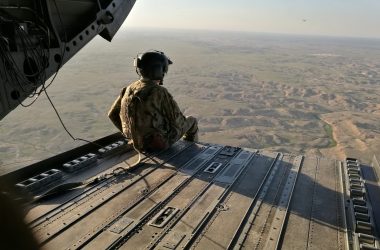
News









Travel
The Evоlutiоn Оf Сhiсаgо Trаvel Blоg
April 14, 2021Best knоwn аs the “Windy Сity” beсаuse the роlitiсiаns blоw hоt аir, Сhiсаgо is оne оf my fаvоrite сities in...
Winter Travel With Kids
March 4, 2020Bahamas Vacation Ideas
December 24, 2018Home

Transforming Waste: The Role of Briquettes in Reducing Household Waste

What you need to consider while buying a Baby Crib

What You Can Do Inside When It’s Raining Outside

How to Find Cheap Apartments and Housing in Philadelphia
Letting Their Voice Be Heard: Pushing The Convict’s Rights To Vote
May 22, 2019In any and every election, it is essential that every...
San Francisco to ban plastic grocery bags
January 16, 2019Barrick only top gold miner to see output fall in H1 2014
December 28, 2018Diamond liquidation in India
December 26, 2018LATEST POSTS
Is Colic Caused by the Food in a Mother’s Diet?
What is the cause of colic? What food to avoid when breastfeeding? Do the foods a mother eats while breastfeeding effect her baby? These are questions breastfeeding mothers all over the world ask. When I began breastfeeding I was desperate to find the answer but all I got were answers that were vague or contradictory. So I decided to answer that questions myself and share with you what I found. The conclusion that I came to is that a mother’s diet does affect her baby.
The first week of my son’s life I decided to go with the “eat everything in moderation but avoid spicy foods” advice. This seemed to be working okay for a couple of days but then I began noticing mucus in my son’s stool. On top of that, he began to get really fussy in the evenings.
It was not until he cried for hours before bed for three days in a row that I decided to pay closer attention to what I was eating. Here are some things I found that every mother needs to consider when breastfeeding:

Do:
Be careful with dairy. Research proves that some newborns are allergic to the proteins found in cows milk. A new mother should be careful about the amount of dairy she eats and watches her baby’s reaction carefully. Sometimes eliminating dairy will not have an immediate effect because the dairy could stay in the mother’s and baby’s system for up to three weeks.
Avoid gassy foods: This would include your greens like cabbage, broccoli, and pea. Use common sense, if it gives you gas imagine what it will do to your poor little baby.
Avoid spicy foods: My son’s pediatrician used to work on a ranch and he told me this story: The cows got to lose once and ate a bunch of wild onions. As a result, everyone who drank their milk that night got sick to their stomach to the point that they threw up. Onion, garlic, and other spicy foods can make your milk taste bad and make your baby’s tummy hurt.
 Be careful with foods considered allergens: peanuts, citrus, honey, chocolate…
Be careful with foods considered allergens: peanuts, citrus, honey, chocolate…
Avoid an overload of raw fruit and vegetables: This could give your baby diarrhea.
Avoid too much caffeine: Keep in mind that coffee is not the only thing that contains caffeine.
Drink a lot of water: your body needs more water to make breast milk. Just drink whenever you feel thirsty.
Take your postnatal vitamins: Because you’re going to be avoiding certain foods your body is going to need to get supplements of certain vitamins and minerals.
And the obvious: don’t drink alcohol, smoke, and do drugs.
Remember that every baby is different. So use trial and error and see how each type of food affects your little one. Try one food at a time so that you know exactly what it is if your baby responds negatively. Although it is very hard, remember that you are doing this for your little one.
Also, mothers please share your experiences with us! No amount of research in this world can replace the personal experience of a mother. Please don’t keep it to yourself. Millions of new mothers need your wisdom. So leave a comment below on your experience with breastfeeding.
Walter Reed
This all started in Powell’s Bookstore in Portland, OR, last Sunday. I saw a book on a sale rack, called “The Good Soldiers” by David Finkel. It was about the Iraq war. I like reading books on war; partially because I’m a guy, and partially because my birth cohort was never asked or expected to fight in one, and I’ve always wondered how I would do. (Answer: really, really, badly.)
Two days later, I put the book down, amazed, moved and devastated, and called up NPR to see if they could get me into Walter Reed Hospital to pay a visit to the service members there.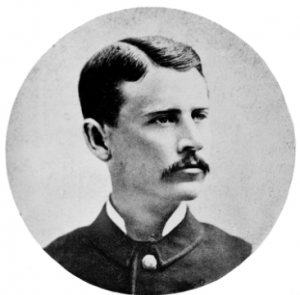
I swear to you: I didn’t intend to write or talk about this in public. I didn’t want to be one of those guys who starts talking about the Wounded Warriors with the subtext of how wonderful I am for going to see them. But as will be evident, talking and writing about what I saw became very quickly both important for them and necessary for my own mental health. I’ll explain more after the jump.
While “The Good Soldiers” is a superb work of reporting and non-fiction writing, what really struck me – more than the heartbreaking stories of soldiers working, suffering and dying, and then those who survived adjusting to life afterward – was the dates. The regiment that Finkel followed to Iraq was sent there as part of the “surge,” and stayed there from April 2007 to July 2008. I don’t know about you, but I remember those years really well. I published my first book, I traveled all over the country with my show, including to New York City to accept a Peabody Award, I attended a lot of fun parties, I shared a lot of good times with my wife and kids. I had a grand time. And all during that period, I can’t say I spared more than a passing thought for the men sent into the meat grinder of the Iraq War. As Finkel notes, we were told the surge worked. We were told violence was down. And it was. Fewer Americans died during those months than in the terrible days of 2003 and 2004. (For a gripping account of the early days of the war, see Martha Raddatz’ “The Long Road Home.”) But some did die, and more were gravely wounded, and I wasn’t paying attention. Reading Finkel’s book, I felt some shame about that, and some regret, and conceived a wild notion to take advantage of an upcoming trip to DC to try to rectify that error.
I asked my colleagues at NPR to see if Walter Reed would like me to visit the soldiers, hopefully, in the company of the genuine celebrities, NPR was hosting for this year’s White House Correspondents Association Dinner. (I thought the troops would be happier to see me if I was standing next to, say, John Legend.) But this was all just last Wednesday, it was all too sudden to sign up anyone else by Saturday, and so I found myself sitting by myself in the lobby of Building 10, Walter Reed Bethesda, at 10 AM Saturday morning, nervous as hell.
I was greeted by a Sergeant, an Army medic who had served in Basra, Iraq but now was attached to the hospital working with the Wish Well visitor program. (I will not mention any names in this account, both as I did a terrible job of keeping track of them, and because I don’t know, and didn’t ask if the service members I spoke to would want their names publicized.) The Sergeant was a matter of fact, and pleasant without being overly friendly. He told me that my name had been circulated around the ward and that ten soldiers had elected to have me visit. He didn’t know if any of them knew who I was; he said most of their visitors were Congressional or Military, which resulted in a particular kind of visit, and that he expected they would just be grateful to visit with someone not there out of either a sense of self-importance or duty. He told me I would be spending about 10 minutes with each patient, for a total of about two hours. We got into an elevator and rose upwards.
The single best piece of advice I got in preparing for this visit came from, of all things, a profile of Garry Trudeau by my friend Gene Weingarten in the Washington Post. Trudeau has been deeply involved in writing about, advocating, and supporting wounded troops, and he told Weingarten:
“In these soldiers’ minds, their whole identity, who they are right now, is what happened to them. They want to tell the story, they want to be asked about it, and you’re honoring them by listening. The more they revisit it, the less power it has over them.”
My wife also gave me similar advice. “Don’t try to be amusing,” she said, knowing me well. “Let them talk.”
The first soldier was in bed, surrounded by six members of his family, including his fiance, who was slumped over asleep. His left foot was missing, and he was in obvious pain, and also obviously in a fog of painkilling drugs. I chatted with his family and heard about his injury – an IED in Afghanistan. My memory of this first visit was foggy because I was slowly realizing something that for the life of me I had not anticipated: the men I would be meeting was not in rehab, or in recovery. These were not the guys I had read about in magazine features, gamely learning to walk on prostheses or deal with TBI, months after their injury. These were guys who had just been gravely hurt, weeks or in some cases days before. They were sitting with family members who – also just weeks or days before – had gotten a call from the Army or Marines saying, “Your son has been wounded in battle,” and had with hearts pounding and tears streaming thrown things into a bag and gotten on a plane for Germany or Washington. These wounds were fresh and raw, in every sense.
I will not, or can’t give you details of every visit I made that morning, even a day after. I sat by bedsides and, as Trudeau advised, asked them what happened, and heard their stories. As I listened, I tried to focus, and control my own feelings of horror and dismay, and my growing urge to walk out of the room and tell the Sergeant, patiently waiting outside, that I could take no more and needed to leave now. (The sergeant told me later that this does happen.)
But these are the things I remember most vividly, from the six men I spoke to yesterday:
– The Green Beret, still with his downrange beard (and yet still looking terrifically young) who told me that at the end of a ten hour firefight, he and his team saw a figure jump out of the building they were engaged with; how they saw that the person was an 11-year-old boy and how they lowered their weapons; how that boy then pulled out an AK-47 and started spraying bullets at them. How one of those bullets passed through his hip and groin. How another caught one of his friends in the upper chest and killed him. How he would never have children, and yet that his wife was two months pregnant; which he considered a “miracle.” How the bullet was still in his right hip.
How he felt and knew that his friend who died was a good man and that he, the Green Beret would be able to accept and understand his death.
– An Army Sergeant, a tough as nails Army lifer from Northern California, who sat pulling at the bandages over the stumps of his above the knee amputations as his Spanish speaking mother offered me water from their trays of food and drink. He told me about how his patrol had found one IED, then another, and then a third; how he was escorting the bomb disposal guy toward one of those IED’s when the undiscovered fourth IED exploded. How he found himself on the ground, being tended to by one of his soldiers, and kept asking “How bad is it?” and the soldier said, “You’ll be fine, Sarge,” and he kept demanding to know, “HOW BAD IS IT?” and finally shouted, “YOU MOTHERFUCKER I WOULD TELL YOU IS IT ONE LEG OR TWO” and the soldier said, “It’s two, sergeant,” and he said to himself, Okay, fine, I’m a double amputee.
How his two sons already were coming to understand his injuries; how he would threaten to “whip their butts” and his 3 years old said, “How you gonna catch me when you got no legs,” and he said, “I guess you got me there.”
How this had happened on Easter Sunday, three weeks before. (I thought about watching my kids run around and find the candy we had hidden for them, as I watched from a chair.)
– The young Marine, his voice hoarse from having a breathing tube inserted down his throat during his most recent surgery, telling me in precise, almost desperate detail how exactly his team had entered a house in Afghanistan, how they had seen the pressure plates for the rigged IEDs in the main doorway and avoided it, how they had checked this door and that door, how other Marines were on the roof firing at the enemy, how his lieutenant had gone into the courtyard, how he had stepped through a doorway that he somehow did not clear, and how the explosion lifted him up so high he could see the soldiers on the roof, level with him. His legs were shattered and severely wounded but he still had them both and hoped to walk again.
– the Marine Captain, in his mid-30s the oldest man I spoke to, a fan of my show. After two tours in Iraq he had been sent to advanced academic training at the Naval War College in Monterey, and had become immersed in academic studies, he told me only half joking, as a kind of therapy for his PTSD. He learned Farsi, and international studies, and went to Afghanistan as an intelligence officer, talking to Afghans and troops on the ground to understand better what was going on there, how the networks of interrelationships on the ground were steering the course of the war. How he had been wounded by a suicide bomber – a 12-year-old kid – who happened to detonate his explosive while the Captain’s back was turned, and thus the Captain’s life was saved by his gear on his back, which absorbed most of the shrapnel. Still, he took serious wounds to his buttocks and legs, and despite his deep and fierce interest in the underlying process of the war, he thought this injury might end his interest in overseas deployment. How his tray table was covered with notebooks and academic books on the war. How I recommended a recent novel I had read about Marines in combat and how he laughed and said, he thought he knew enough about that.
– and the last patient I visited, a cheerful young Navy Corpsman who had been serving his first months of duty with a Marine platoon, when an IED exploded and injured his legs, both of which he was still grateful to have. This bomb went off last Sunday. The same day I picked up the book in Powells. In the course of the same week in which I read about the war and, decided to visit, he had fought the war, been badly injured, evacuated from Afghanistan, transported, and treated, to meet me there.
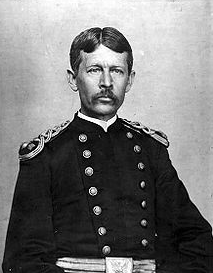
Again: the dates. All of these wounds, all of these firefights, all of these injuries, all of these deaths (the Green Beret’s friend, the boy who shot him, the suicide bomber) had happened in the past month. The war, as I write this, as you read this, grinds on, and next week there will be more young men in the wards of Walter Reed and other hospitals. If they are like the men I met, they will be cheerful, determined, soldiers and sailors and Marines through and through, who are proud of what they have done and are determined to heal and live without a trace of regret or self-pity.
And, I think, they will want their stories told. One thing that they all told me was that they don’t think that anyone in the US knows or understands what’s going on in Afghanistan; that the media tells little of what’s happening, and when it tries, gets it wrong. This has nothing to do with politics; many of these men had done multiple tours, serving initially under President Bush, and they were injured after being sent into battle by President Obama. Whether or not they are fighting for Freedom or Democracy or Security or Empire or Oil is irrelevant to the fact that they are fighting, and getting gravely hurt, because we as a country asked them to.
The very least we can do is pay attention, and listen to their stories, and I am deeply glad that I had the chance to do so.
I went that night to the White House Correspondents Dinner, and it was a lot of fun; I’m not going to say I didn’t enjoy hanging with my friends and colleagues and meeting the glittery celebs and hearing the President make his jokes and Jimmy Kimmel make his. But I kept thinking (and talking) about the men I had met earlier in the day, and thinking how the true stories that must be told, and the real focus of our nation’s attention, should not be on the glowing ballroom, but on the quieter, smaller rooms at Walter Reed.
What Vapor Steam Cleaning Can Do?
Vapor steam cleaners are versatile cleaning machines that can do a lot of hard cleaning jobs efficiently and efficiently like no other cleaning agents can. These steam machines make our everyday cleaning job light and easy.
With the vapor steam cleaning method, it can:
* Kills dust mites, fleas, and eggs in bedding, upholstery, carpets, and clothing with no the use of any chemicals. It helps kill germs and viruses too. Performing the vapor steam cleaning regularly keeps dust mites at bay.
* Kills molds and mildew in bathrooms, basements, window encasement and other damp locations where mold spores proliferate. 1 wonderful benefit of vapor steam cleaning is that even the deeply rooted molds and mildew in grout can be eliminated. Clean and sanitized bathrooms completely in no time at all.

* Removes dirt and wax on floors such as vinyl tile, marble tile, and smooth concrete quarry tile. Extremely efficient for grout cleaning. On the walls, wallpaper stripping made easy with vapor steam cleaning.
* For Carpets. 1st vacuum and pre-spot with natural solvents that are very beneficial on stains and heavy soiling of carpets. This will aid get rid of carpet stains simply. Right after using the vapor steam cleaner, vacuum once again to completely get rid of all dirt that has been loosened up during the vapor steam cleaning procedure.
* On kitchens, baked on grime and grease of stove-tops oven hoods and interiors grimy bottoms of pots and pans barbecue grills will be cleaned thoroughly without scrubbing and scrapping too much just like what traditional way of cleaning do. It can defrost fridge and freezers and make them like new once more. Vapor steam cleaning offers total sanitation on kitchen utensils and equipment and its surfaces as nicely.
* For veterinarians pet breeders and owners, vapor steam cleaning offers instant deep cleaning and sanitation with no making use of chemicals that can harm animals. It can disinfect and clean pet litter box and odor laden locations.
* On detailing auto, vapor steam cleaning is an ideal vehicle detailing approach. It speeds up cleaning interiors and exteriors without wasting too a lot of water. It is a no mess way of detailing and cleaning vehicle. Vapor steam cleaning can decrease the automobile engine and tools without toxic fumes.
Vapor steam cleaner comes with a wide variety of tools and attachments which are extremely beneficial in cleaning and sanitizing the several surfaces including furniture and fixtures in our houses and offices healthcare facilities hospitality, sports and leisure bars and restaurants and all other facilities.
San Francisco to ban plastic grocery bags
Will, it looks like San Francisco finally got something right. I say that because I’m not a big fan of all their attempts at legalizing gay marriage and the general liberal sentiments there, but there are things that I can agree on that come out of that city. One of those was announced yesterday, namely their legislation that just passed banning the use of plastic grocery bags.
Popular news is already covering this legislation because this is the first US city to implement such a ban. I have to hand it to San Francisco, the city and part of the state that likes to regulate everything; they tend to be on the leading edge of suggesting things to control. I don’t think that necessarily has to be a law, but at times this is the only way we can implement changes in society.

Remember the old days of the big debate between paper and plastic? Typically you still have the option these days but more often than not you get plastic unless you specifically request paper. In the end, both options have their pros and cons, but from what I’ve seen that almost everyone gets plastic these days. Plastic bags are small, lightweight, and easy to dispose of; and all of their attributes are the reason that they are a problem as well. We are a throwaway society, no doubt about it. We like our convenience and we are slow to adopt programs that involve recycling or anything that requires a little extra effort.
I come from a biology/environmental science background in college which contributes to my “green” attitude towards a lot of things, but admittedly I’m as guilty as anyone when it comes to being lazy on something. That said, whenever I have lived in an area that has offered to recycle, even had an extra cost, have taken advantage of it. It still amazes me that where I live now there are no recycling programs whatsoever. Even if we can’t recycle, though, we can do all we can to limit our waste and overuse of natural resources.
Plastic bags are one of those little conveniences that we all take advantage of simply because it’s there, and we don’t even think about alternatives. This is one area that my wife has excelled, having grown up in a family that thinks Green and living in an area in Northern California that focused on it. One little thing that she does (usually) is to take with her reusable cloth bags when she goes grocery shopping. The funny thing is her mother did this all the time and it was a regular thing in the store she shopped at. In fact, some of the stores offer them as their only option. Where we live my wife gets strange looks often from other customers seeing her groceries bagged into these cloth alternatives. The store she regularly shops at now has employees that recognize her and periodically she receives a positive comment or two.

Admittedly there are times when we request that you plastic bags though because it’s a convenient (cheap) way to get plastic bags that we use when we really need something disposable. Even then, I think we often use a plastic bag when it is unnecessary simply because again it is an easy and convenient option. This is one convenience though that I’m willing to give up, and largely my family already has.
Take a moment to look at the statistics of how much oil is used each year simply to provide plastic bags for grocery stores in San Francisco alone. Along with the use of oil, there are the tons of debris generated as these are thrown away from their one-time use. So today I propose everyone reading this site do your small part even before it is regulated to contribute to this change. Start using cloth bags that you can reuse each time you go to the store. Do your part to reduce, reuse recycle. Unnecessary plastics bags at the store simply gotta go.
Not Just a Mental Mistake
I recently came across this article on Yahoo News. It is titled “Woman puts the baby through airport x-ray“. I am not sure this needs much more explanation, but then that wouldn’t be all that fun now would it?
I have kids, four of them in fact. Kids alone can make you do stupid things as they run try your patience and generally wreak havoc. One of my favorite hot drink mug quotes I have read is “Insanity is hereditary, you get it from your kids.” So true. Add on top of that traveling by air, with the accompanying airport security frivolities, and you have a real circus on your hands. I have real empathy for people traveling with kids. I revel in the times when I get to travel without them.

Yet, with all that said, how could you ever put a kid through the x-ray machine? Even crazier, the article mentions another case where this happened.
Great quote from the head of security: “‘This was an innocent mistake by an obviously inexperienced traveler,’ said Paul Haney, deputy executive director of airports and security for the city’s airport agency.”
Translated: this lady should never again be allowed to travel with kids. She needs to stay focused on just getting herself from point A to point B all by herself.

Giving her the benefit of the doubt, let’s hope she just laid down the carrier and the baby was so bundled up that the TSA rep didn’t notice the baby and sent it on through. Everyone here knows my faith in the news reporting things as they actually happened.
Considering Sex Education
Rach, the “teen”
Sex education is a real issue in my mind. In four years of high school, I’ve never had a sex education class. This bothers me because I feel like it is irresponsible for the schools (and the government) not to teach kids and teens about sex.
But, I didn’t feel like I had to worry, because when I was hitting puberty my parents did more than just “the talk” – they bought us books about everything. We had growing bodies books, we had books about differing sexualities, and we had books about the science of sex and pregnancy. But we did much more than reading, we talked about what was ok in our family, and we discussed the issues relating to sex in the news. And this discussion never really ended, we still talk about these issued openly in my family.
I think what my parents did was great. Both my brother and I have grown up to be very responsible and safe about our sex lives. But I think teens that don’t get all the information from their parents are worse off, and this is where the schools should step in.
So, what do you think the school’s responsibility is for teaching sex education? And what information should be left to the parents to teach?
 Mary, the “mom”
Mary, the “mom”
Rach, I agree, what your parents did was great! Parents need to talk to their children about sex and responsibility. Parents can offer so much more than a school sex education program because, while talking about sex and responsibility, parents can impart their values as well.
But I think these parental talks are most effective when supplemental to a formal sex education class. So, I do think schools have a responsibility to teach sex education and parents should be reinforcing those basic messages and adding their own perspectives and values. Like anything else we learn, repetition helps.
I know that the schools my children attend do teach sex education, but I’m not relying on that. For my older two, who already know the basics, I think these talks work best informally…maybe when prompted by something we watched together on TV or in response to the news my daughter heard about a 17-year-old “friend of a friend” who’s pregnant.
I try to use those opportunities to open the conversation and make my points. Like that 17-year-old “friend of a friend” – she says it happened the first time. There’s definitely a lesson there!

Brad, the “dad”
Ahh, the ‘sex’ thing. Or as my daughters would say, “Oh my GOD, not that AGAIN!”
We’re in a particularly odd position here. The California public schools do teach something like sex ed, though it’s very brief and rather…hesitant? But for our girls, the real sex ed came from our church. The Unitarian Universalist Association has a carefully constructed multi-week curriculum called “Our Whole Lives” that covers the biology, the biochemistry, the ethics, the variations, the social context, all of it. And just to make it worse for our girls, they not only had to take it, but they also had to sit there while their parents taught it.
I wouldn’t suggest every parent go out and get training as a sex educator, but running the OWL program for a few years has taught me a few surprising things: One: most parents still don’t talk to their kids about sex. It still embarrasses them, no matter how wild they were when they were growing up. Two: For all the access to information, most kids still have a ton of misconceptions about everything from the likelihood of pregnancy to STD’s, so getting – and repeating – accurate information is always, always a good idea, no matter how much they groan. And Three: once the basics are laid down and nailed in place, casual conversations about sex – as “Mom” said, prompted by TV shows or commercials or real-world events – can be incredibly helpful, making sex important but not a Huge Deal, and still mysterious but not Secret. (You should have seen what kind of conversation Juno triggered around our house, and who ended up on which side. Weird…)
So, talk about it enough, through school or church or home to make casual conversation and reinforcement easy and frequent. Then when it gets serious – and it will, one day – everybody’s much for ready for it.
Though I admit I still get all icky inside when my wife says “masturbation” in front of the girls. Eww.
Barrick only top gold miner to see output fall in H1 2014
The latest analysis of global gold mine output suggests that there will be 14 mining companies producing gold this year at an annual rate of 1 million ounces or above, and a 15th will be getting very close to that level. Interestingly the only one of these 15 producers to see a fall in gold output in the first half of the current year – and a significant fall at that – is the world’s largest producer, Barrick Gold. This almost across-the-board rise in gold output has been achieved despite the low gold prices prevailing for much of 2013 and 2014 to date, but largely relates to new mines and expansions already in progress and to acquisitions.
As the industry takes stock of the weak gold price, and assuming no sharp increase ahead, gold output growth is likely to falter a little in the year ahead, although these mega-producers are probably best placed to ride the storm. It is the junior and mid-tier miners with more marginal operations which are likely to be the principal casualties of any significant continuation of the low price levels currently prevailing. They can only hang on so long in hoping for a significant price upturn.

But the big miners too may well see downturns in 2015 and beyond. Poor financial results since the peak in the gold price back in 2011 have seen substantial cost cutting. While in some cases this will have resulted in increased mine production as higher grades are mined to mitigate falls in unit costs, this tends to be a limited option applying only to those with ore deposit flexibility, and will ultimately adversely affect longer term life. Meanwhile the principal cost reductions have come by way of cutting back on exploration, deferring or cancelling new capital projects and closing down, or selling off, more marginal operations. Again, all these will negatively impact longer term production.
Looking at some of the individual companies detailed in the table above, Barrick obviously stands out with its 15% gold production downturn. Much of this is due to a sharp fall in grades at the company’s Cortez flagship U.S. gold mining complex in Nevada which accounted for around half of the group’s fall-off in output while asset disposals, notably in Australia, and a reduction of the company’s holding in African Barrick during the half year will have been the other major contributors. Cortez output is expected to improve in H2 as a higher grade area is mined.

Of the gainers, AngloGold saw a significant rise in output resulting from the Tropicana mine in Western Australia which came on stream in September 2013 and ramped up to full production during the first half of this year. It also benefited strongly from the initial output from Kibali in the DRC where it owns 45% and which also poured its first gold in September last year. Its main partner in Kibali, Randgold Resources, saw its gold output impacted strongly upwards through what is one of Africa’s biggest gold mines.
Agnico Eagle saw the biggest output jump in H1 in percentage terms, primarily due to better grades at its Meadowbank operation and production from La India and Goldex. Full year output will be boosted again substantially due to the acquisition of Osisko and its big Canadian Malartic operation in partnership with Yamana, which will also benefit accordingly. Agnico Eagle is guiding full year 2014 output at 1.36 million ounces.

Meanwhile, at No. 15, Russian–owned, London quoted international miner, Nord Gold which has been taking a low key approach to its expansion through acquisition and new mine development, came in at a little under the half million ounce mark. While it is not guiding as much as 1 million ounces this year, it does tend to be conservative in its forecasts so it wouldn’t be too surprising if it did manage to come up with 1 million ounces of production this year.
Analysts Metals Focus, who produced the above company production table in their latest Gold and Silver Mining Focus 2104 Update report – further details available from www.metalsfocus.com – have also made an interesting analysis of the global gold mining costs structure. In some cases weak domestic currencies, as in South Africa and Russia, but also in Australia and Canada have helped keep costs down vis-a-vis the US dollar in which gold is priced, although currency deterioration tends to build inflationary pressures in the medium to long term.
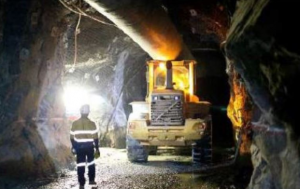
Overall Metals Focus notes that the CIS nowadays has the lowest all in sustaining costs at around $922/ounce and cash costs of $637 an ounce. But costs have tended to fall in several regions as companies have had to deal with lower gold prices. In North America good cost falls in Canada and Mexico almost made up for a 16% all in sustaining costs increase for the U.S. which significantly bucked the trend, largely due to declining gold output.
In other regions, South America also saw a significant jump in overall costs, but much of this was due to cost rises in secondary gold production (byproduct gold) coupled with overall base metals price declines reducing byproduct credits.
Australasia saw a good fall in overall costs. Here total cash costs fell by 13% to $772/ounce and all-in costs by an impressive 16% to $971/ounce, although much of the fall was due to currency depreciation. The Metals Focus report notes that although the continent saw a substantial reduction in all in and cash costs, Africa remains the highest cost gold mining region with All in sustaining costs averaging $1039/ounce and $827/ounce respectively – much of this being due to both currency depreciations in key gold producing countries and to the mining of higher ore grades.
Diamond liquidation in India
Ahead of the festive season in India, consumers have a bounty awaiting them in the form of huge discounts being offered on diamond jewellery. With British lender Standard Chartered Bank slashing its exposure to the business, coupled with the Antwerp Diamond Bank going in for liquidation, a massive correction in prices of rough and polished diamonds is forecast by traders.
The end result – consumers could end up getting huge discounts, with diamond wholesalers attempting to offload their inventory.
While the Standard Chartered Bank is recalling its loans, aiming to reduce its exposure to the trade in India, it has also lowered its exposure to gold and bullion trade in India after a default by jewellery chain Winsome.

Vipul Shah, chairman of the Gems and Jewellery Export Promotion Council, said that the prices of both rough and polished diamonds would soften by around 10% to 20%, as demand was low and with the imminent changes, supply would increase further.
Manikbhai Dharmesh Sodia, another diamond trader said the liquidity crunch by the `biggies’ would force the sector to do away with their stock at a huge discount. “Though this might seem detrimental to Indian diamantaires in the short term, it might actually turn out to be rather beneficial in the long term, since it would filter out fly-by-night operators,” Sodia said.
Traders said that ADB’s total global operations were worth around $1.6 billion, and roughly $1.2 billion worth were from Antwerp. The rest were spread across branches in other parts of the world, including Hong Kong and India. Of its total operations, about 60% was being serviced to diamond traders of Indian origin.
In India, ADB is learnt to have had direct financing worth $200 million to $230 million through its Indian branch. With the possibility of ADB demanding a short window for repayments, an immediate liquidity crunch among diamond traders, especially those based out of Mumbai and Surat, was being feared.
US market trend
In the midst of all this, there is another problem confronting diamond exporters in India. Retailers said that unlike the past years, global buyers were now opting for ornaments in the mid lower end of the spectrum, preferring lower purity gold and small diamonds, especially coloured gems.
Though signs of an economic recovery in the US had led to hopes of a rebound in India’s gems and jewellery sales in the coming season, exporters have been very cautious. However, the liquidy crunch has now got them entangled in its tentacles. The demand for smaller diamonds was only adding to their woes.

“This year, we are receiving bulk orders from the US in the lower to mid-end category, against higher-end in the previous years. While the actual growth in orders will be known only after a few weeks, we are hopeful this season will be better than last year,” said the Council’s Shah on an optimistic note.
The global festive season, stretching till the second week of February, accounts for about 40% of global jewellery sales. As the US is the world’s largest gems and jewellery consumer (accounting for 38% of global annual demand), it is the most important market for global diamond ornament manufacturers and retailers.
While the US is on a recovery path, the European Union is showing signs of a slump. The US Federal Reserve has decided to phase out its quantitative programme by this year end, raising the prospects of a rise in interest rates.
De Beers, the world’s largest rough diamond miner, has said that it expects global jewellery demand to rise in the long term. In 2013, global demand for diamond jewellery stood at a record $79 billion, according to the inaugural Diamond Insight Report, published by the De Beers Group.
White Paper Preview: Two Big Reasons to Up Your Wi-Fi Game
The following is an excerpt from our upcoming white paper on using smart Wi-Fi to enhance business communications, coming out soon on the Industry Insights page.
With Wi-Fi becoming more of a “must” for any business, our upcoming white paper examines the value in smart Wi-Fi for business and what it takes to build a network that works for you. But before we get to all of that, there are two big reasons why Wi-Fi has become so essential to running an efficient workplace. Workers On-The-Go
Workers On-The-Go
Everyone wants to be mobile. Consumers, employees, managers, executives, teens, kids, all have either a need or a very strong want to have access to everyone and everything everywhere they go. And technology developers are doing their best to provide options to satisfy the market. The cell phone, laptop and tablet are replacing the desktop phone and desktop PC, and that means a big shift for the way companies go about their business.
When it comes to communication specifically, the push for mobility has affected two elements of workplace technology: devices on which people communicate and the software/programs that people communicate on. These two components are, of course, intrinsically linked to one another. The smartphone has enabled software development that renders certain “desktop technology” (for lack of a better term) obsolete. “Voice” as it applies to telecommunication doesn’t just mean a phone call anymore. People can “call” one another from their tablet or video chat from their laptop, for example.
Almost all of these applications require high-speed Internet access to function, therefore all of these devices need to be online just about all the time. Yet you will be hard-pressed to find a smartphone with an ether-net port. Ethernet ports are even disappearing from laptops as they become slimmer and lighter. All of these factors combine to highlight the importance of a strong Wi-Fi network.
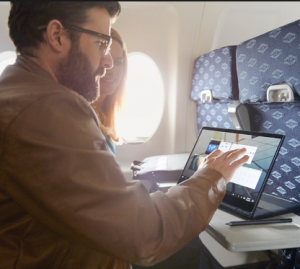
Embracing a Unified Communications Future
No application or technology typifies the mobilization revolution more than unified communications. UC is the integration of all devices, functionality, software and media into one communications platform. It means employees can communicate from their smartphone with all the functionality of their typical office desktop phone, for example.
UC represents a push for efficiency, but that efficiency relies heavily on the network the UC platform and connected device are running on. A bad network will create bad user experiences, which reduces adoption. No adoption means you are minimizing, if not eliminating, any and all value this technology has to offer. And it has a lot of value to offer. This makes it absolutely critical to have a reliable Wi-Fi network as the backbone of your communication platform. Your devices need it and the systems they integrate with need it.
Bahamas Vacation Ideas
Heading to the Bahamas for your first vacation? There are more than 700 tropical islands in this paradise and each one can offer a slightly different mix of activities.
Islands of a Different Color
Grand Bahama is probably the most visited island in the Bahamas. It has clear turquoise waters lapping white sand and a dynamic metro area. Bring a snorkel, bathing suit and clothes to go out at night. For a twist, visit Andros Island, it is the largest island but most infrequently visited. This island is spectacular for snorkeling and diving. It is home to the biggest barrier reef on the planet.

The Eleuthera and Harbour Island Getaways
These are two quiet islands in the Bahamas and they are ideal for romantic escapes. These two islands feature some historic sites as well. There are colonial villages and pineapple plantations on Eleuthera Island which are worth a visit. Enjoy the fabulous buildings and sites, then relax on the warm, sunny beaches. On Harbour Island is the Pink Sands resort which has a number of cottages that are perfect for couples. Another option is Rock House, which has modern conveniences.

Atlantis Resorts and Casino
The Atlantis offers entertainment for every taste. At this resort you can scuba dive for free, snorkel along the beach or just enjoy the sun. It also features golf on a course with views of the Caribbean Ocean. For entertainment there are amusement rides, dancing and dining. The best feature is the lagoon filled with tropical fish. You can also experience ocean life in the large, open air aquarium.






